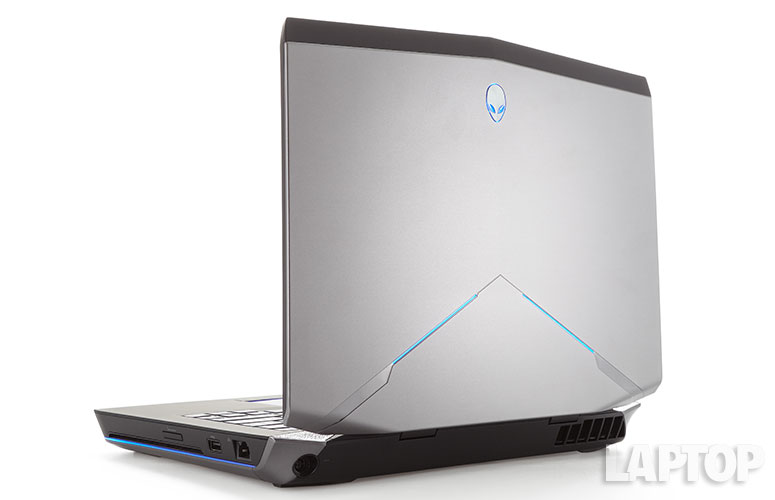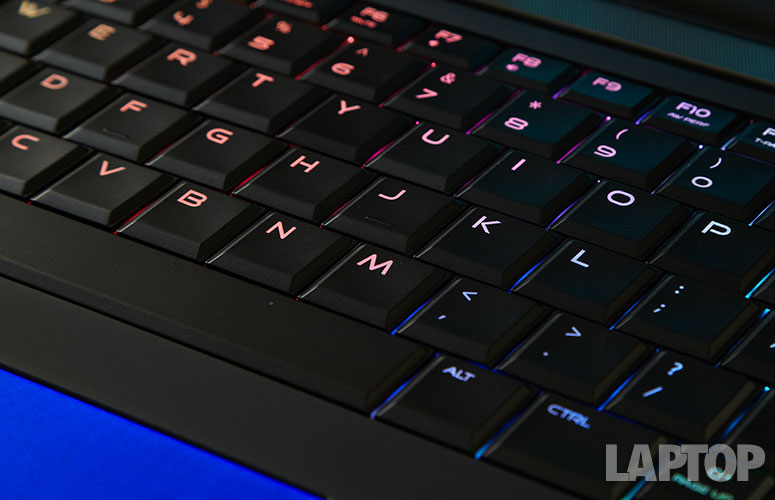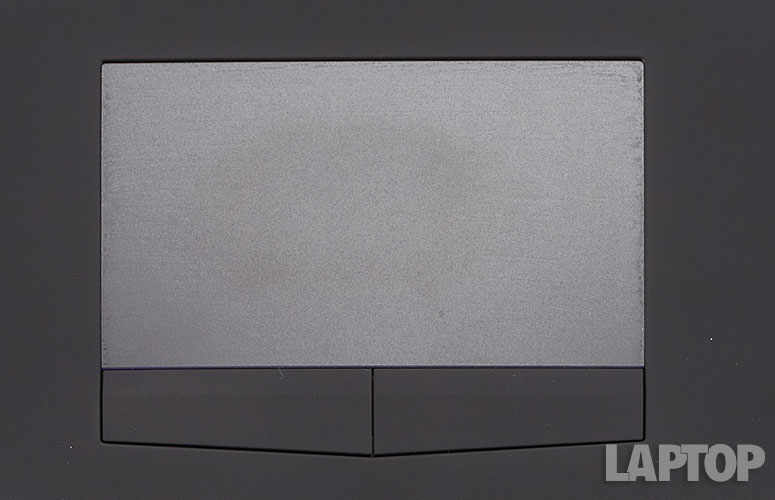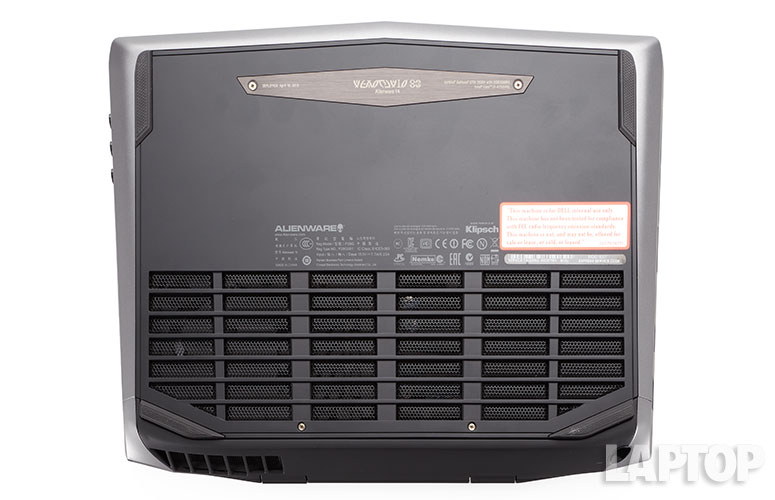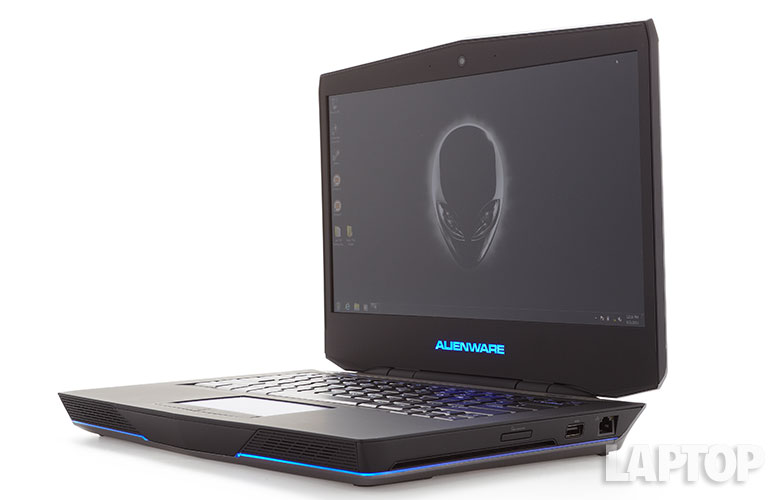Laptop Mag Verdict
The Alienware 14 is a portable gaming notebook with a slick redesign and graphics might, but it runs hot under pressure.
Pros
- +
Slick design with customizable lighting
- +
Powerful Intel Haswell processor
- +
Outstanding graphics performance
- +
Comfortable keyboard
- +
Great audio quality
Cons
- -
Relatively dim display
- -
Runs hot while gaming
Why you can trust Laptop Mag
So you're looking for a serious gaming laptop, but don't want to have to lug around an 18-inch, 10-pound monster. Alienware may have what you're looking for in its new Alienware 14. Packing a fourth-generation Intel Core i7 processor and one of Nvidia's latest graphics chips, the Alienware 14 (starting at $1,199, $2,049 as configured) is a monster on the inside but is compact enough to throw in a backpack. Add to that a drool-worthy design, and you've got the makings of an impressive gaming rig that can go with you.
[sc:video id="xrOHE1cTr6T2vlJlb-N_k72bVLanzJ2Y" width="575" height="398"]
Design
Click to EnlargeAlienware has completely redesigned its product line, giving them a sleeker look while still retaining the over-the-top customization the company is known for. The new aesthetic, which Alienware calls its Epic design, gives the Alienware 14 the look of an alien spaceship, with the entire chassis coming to a point at its front edge. Alienware has also done away with the large, lighted sections below the notebook's wrist rest in favor of subtler, thin LED strips.
The old design's soft-touch lid has been replaced by anodized aluminum, which gives the chassis a reflective quality, further accentuating the spaceship motif. At the front of the lid is the trademark Alienware alien-head logo, while the bottom portion plays host to two diagonal LEDs.
MORE: 20 Sexiest Laptops of All Time
Pop open the lid, and you're struck by the luxurious soft-touch finish that covers everything from the keyboard deck and keys to the display bezel and wrist rest. Just below the display is a large, backlit Alienware logo. A thin speaker cover sits above the keyboard, to the left of which is the Alienware 14's large, backlit power button. The underside of the system is made of magnesium alloy, though the rear portion of the panel is carved up into a series of mesh-covered grates to allow for better airflow.
Sign up to receive The Snapshot, a free special dispatch from Laptop Mag, in your inbox.
The Alienware 14 measures a bulky 13.2 x 10.2 x 1.57-1.62 inches and weighs a hefty 6.6 pounds, making it one of the heaviest 14-inch notebooks on the market. Still, for a serious gaming system, that's fairly light.
Lighting
Click to EnlargeDespite the redesign, Alienware has carried over its penchant for LEDs. With all of the lights flipped on, our Alienware 14 looked more like a teenager's tricked-out Honda than a notebook. But that's not a bad thing. In fact, we preferred the extra zing the lights helped breathe into the machine.
On the notebook's lid are two strips of LEDs that angle inwards from the corners. Another strip of LEDs wraps around the lower portion of the chassis from the edges, terminating at the front of the notebook. Naturally, you also get backlighting behind the keyboard and the touchpad, as well as the large power button in the top left corner of the keyboard deck.
You can change all of the aforementioned LEDs by using the Alienware Command Center software. From here you can choose from a long list of pre-loaded lighting themes, let the system continually cycle the lighting, or even create your own custom profiles.
Creating a profile is fairly easy; users can assign 20 colors to each of the notebook's 10 zones. Even cooler is the Morph effect, which cycles between two designated colors, or the Pulse effect, which makes the lights flash on and off at a set tempo. You can make your profile as basic or complex as you want.
Alienware has also partnered with several developers who have agreed to create custom profiles for specific games. Currently, there are 60 available titles with custom profiles, including "Metro: Last Night," "Orcs Must Die! 2," and "Hotline Miami."
Display
Click to EnlargeSporting a 14-inch, 1920 x 1080, anti-glare LED display, the Alienware 14 produced clear, crisp visuals. Colors were vibrant, and blacks were endlessly deep. A 1080p trailer for "Man of Steel" looked gorgeous, with Superman's trademark crimson cape standing in stark contrast to the austere walls of the Fortress of Solitude.
Games, such as "BioShock Infinite" looked stunning on the Alienware's display. Particle and lighting effects shown brightly as we ran through the cobblestone streets of the game's floating city of Columbia, while details such as the small splashes of water from a nearby fountain looked crisp and inviting.
It wasn't all good news for the Alienware 14's display, though. The screen's brightness averaged just 161 lux on our light meter, well below the mainstream notebook category average of 245 lux. By comparison, the MSI GT60's 15.6-inch display registered 247 lux. Such a dim display made watching particularly dark videos, such as a trailer for "Pacific Rim," less pleasurable. We also experienced somewhat shallow viewing angles. When seated to the far left or right of the screen, videos and images washed out.
Audio
Click to EnlargeThe Alienware 14's Klipsch speakers offered rich, full-sounding audio, whether we were playing a game or rocking out to our favorite tunes. While playing "Tomb Raider," the howling of gale force winds atop a mountain and the crackling of a nearby campfire made us feel as though we were standing shoulder-to-shoulder with Laura.
While listening to Big Boi's "War," the lyrics seemed to pour out of the Alienware 14's speakers. The bass produced a satisfying thump, while the synth-heavy interlude was crisp without being overly tinny.
Alienware includes two audio programs with its systems. The first, Alienware Audio, allows you to change the notebook's basic sound settings. The real fun, though, comes in the included Dolby Home Theater software. From here, you can switch between multiple audio profiles, including Movie, Music and Game, or create up to six custom profiles. We tended to stick with the Music profile, as it offered the richest-sounding audio. Alienware's audio took a serious hit with the Dolby software turned off, so we strongly suggest you leave it on.
Keyboard
Click to EnlargeAlienware's notebooks have some of the coolest keyboards on the market, and the 14's is no different. Instead of the chiclet-style keys found on many of today's laptops, Alienware continues to keep the keyboard's keys close together, making it easier for gamers to slide their fingers from key to key during intense action.
We also appreciated the soft-touch material the company used on both the keys and the wrist rest. However, the front edges of the system pushed into our wrists during prolonged periods of typing.
Click to EnlargeDespite that, we managed to type at a rate of 80 words per minute with a 1-percent error rate on the Ten Thumbs Typing Test, the same rate as our desktop keyboard average.
As part of Alienware's new design scheme, the keys are no longer outlined in bright LEDs. Instead, they have use more traditional backlighting, but can still be customized to any color you want via the Alienware Command Center.
Touchpad
Click to EnlargeAs part of the redesign, the Alienware 14's touchpad is now completely backlit, and users can change the color using the Alienware Command Center interface. In darkened rooms, the touchpad really stands out.
The Alienware 14's 4 x 2.25-inch touchpad provided accurate movements and excellent feedback. The pad's relatively large size means that users won't have to constantly reposition their hands when gaming on the go. The left mouse button didn't always detect fast clicks, but if you're a serious gamer chances are you'll wind up using a dedicated mouse.
Heat
To say that the Alienware 14 gets a little hot under the collar during extended gaming sessions is a massive understatement. After we played roughly 20 minutes of "Tomb Raider," the 14's keyboard had reached an uncomfortable 101 degrees Fahrenheit between the G and H keys. The middle of the underside of the system topped out at a disturbing 120 degrees, while the rear vent got as high as 154 degrees on the thermometer. The sole cool spot was the touchpad, which registered at just 88 degrees. In general, we consider temperatures of 95 degrees and lower to be comfortable.
When not gaming, however, the Alienware 14 managed to keep its cool. After streaming a 15-minute video, the notebook's keyboard registered a relatively frosty 91 degrees, while the underside hit 95. The touchpad remained the same 88 degrees as when we were playing "Tomb Raider."
To keep the Alienware 14 from self-immolating, the company had to cut out half of the bottom panel and replace it with a series of mesh vents. That's on top of the large vent on the notebook's rear. All of these vents, combined with the high-end components inside the Alienware 14, result in a system that's not exactly quiet. When the system's fan kicks in, it sounds like a small turbine. In fact, many of our colleagues were surprised to hear how loud the fan became while we were playing "Tomb Raider."
Ports and webcam
Click to EnlargeFrom controllers and flight sticks to headsets and wired mice, gamers use a lot of peripherals. And to attach all of those gaming goodies, a notebook needs to have a healthy number of ports. The right side of the Alienware 14 houses an Ethernet jack, USB 3.0 port, Blu-ray drive and SD Card slot. Over on the left side, you'll find a lock slot, two USB 3.0 ports, a miniDisplay port, HDMI in/out jack, microphone port, headphone port and dual microphone/headphone port for use with gaming headsets. The power jack is in the back.
Click to EnlargeThe Alienware 14's 2-megapixel webcam produced excellent visuals. Images exhibited a high level of detail, including stray strands of hair sticking up from our head and wrinkles around our eyes. We were also impressed with how well the webcam worked under low-light conditions.
Graphics and gaming
Click to EnlargeThe Alienware 14 is first and foremost a gaming laptop, and it more than delivers on that front. Thanks to its Nvidia GeForce GTX 765M and its 2GB of video RAM, we were able to play "Tomb Raider" with the graphics set to Ultra at a resolution of 1920 x 1080 and see average frame rates of 33 fps.
When we stepped it up to the Ultimate setting, though, frame rates fell to 22 fps. Still, even high-end desktop machines have trouble playing this game on Ultimate, so this is no big knock against the Alienware 14.
On the 3DMark11 benchmark, the Alienware 14 registered 4,136, which is just above the category average of 3,925. The MSI GT60, with its Nvidia GeForce GTX 780M, ran roughshod over the Alienware, pulling down a score of 7,926.
On the "BioShock Infinite" benchmark, the Alienware 14 scored a sky-high 111 frames per second with the graphics set to Low and the resolution set to 1366 x 768. When we bumped up the resolution to 1920 x 1080, frame rates dropped to a still-impressive 71 fps. Push the graphics to the highest setting and set the resolution to 1366 x 768, however, and frame rates fall to 40 fps. With the resolution at 1920 x 1080, frame rates drop to 24 fps, making the game essentially unplayable. At these same settings, the MSI GT60 maxed out at 49 fps.
On the less resource-intensive "World of Warcraft," the Alienware 14 performed like a champ. With the graphics set to max and the resolution at 1920 x 1080, the notebook pulled in 84 fps, which is less than the category average of 97 fps, but still very respectable. The MSI GT60 put up 116 fps at these same settings.
Performance
Click to EnlargeAlienware strapped our test unit with a fourth-generation 2.4-GHz quad-core Intel Core i7-4700MQ processor, 16GB of RAM, a 256GB mSATA SSD and a 750 GB, 7,200 rpm HDD. According to Intel, its fourth-generation chips provide users with improved processing and graphics power, while reducing energy consumption by as much as 20 percent. During our testing, the Alienware 14 proved itself to be an impressive performer. Games opened and closed in a flash, and system slowdown was nonexistent.
On the PCMark7 benchmark, which tests a system's overall performance, the Alienware 14 registered a score of 5,325, well above the mainstream notebook category average of 4,193. The MSI GT60 2OD-026US, with its Intel Core i7-4800MQ processor, 16GB of RAM and dual mSATA SSDs, however, scored 6,191.
Thanks to its mSATA SSD, which holds the notebook's operating system files, the Alienware 14 booted Windows 7 Home Premium in a speedy 30 seconds, which is 4 seconds faster than the category average. Still, the MSI GT60 booted Windows 8 in a lighting-fast 11 seconds. It's worth noting, however, that Windows 8 was designed to boot faster than Windows 7.
The Alienware 14 copied 4.97GB of mixed media files in an incredible 25 seconds, a rate of 203.6 MBps, or nearly twice the mainstream average of 107 MBps.
It took the Alienware 14 just 4 minutes to complete the LAPTOP OpenOffice Spreadsheet test, which involves matching 20,000 names to their addresses. That's well ahead of the category average of 4 minutes 52 seconds.
Battery life
Click to EnlargeWhile gaming notebooks aren't noted for their battery life, it's nice to know that the Alienware 14 can go for at least half the day without a recharge. On the LAPTOP Battery Test (Web surfing via Wi-Fi), the notebook lasted 5 hours and 17 minutes. That's about 15 minutes less than last year's model, but still an hour longer than the average.
MORE: 10 Laptops with the Longest Battery Life
Software and warranty
Click to EnlargeThe Alienware 14 comes loaded with Windows 7 Home Premium rather than Windows 8. Alienware also made the wise decision to keep bloatware to a minimum, including only the company's proprietary customization software. The Alienware Command Center program allows you to set system performance profiles and change the LEDs' colors, while AlienAutopsy serves as a means to quickly locate and download new drivers, perform system checkups and back up your data. AlienRespawn allows you to create a system-recovery disc.
Alienware offers a one-year warranty through Dell.
Configurations
Click to EnlargeOur top-end configuration of the Alienware 14 costs $2,049 and includes a 14-inch, 1080p anti-glare IPS display rated at 300 nits, 2.4-GHz quad-core Intel Core i7-4700MQ processor, 16GB of RAM, a 256GB mSATA SSD and a 750 GB, 7,200 rpm HDD. You also get Nvidia GeForce GTX 765M and 2GB of GDDR5 RAM.
For the starting config of $1,199, gamers will get a 1366 x 768 anti-glare display with a rated brightness of 200 nits, an Intel Core i7-4700MQ processor, Nvidia GeForce GT750M graphics with 1GB of DDR5 memory, 8GB of DDR3L RAM, a 750GB, 7,200-RPM hard drive and a slot-loading 8X SuperMulti DVD+/- R/RW optical drive. We'd recommend the 300-nit display.
Other options include dual 256GB SSDs in RAID 0 plus a 256GB SSD, Intel Core i7-4900MQ and Intel Core i7-4800MQ CPUs.
Verdict
Click to EnlargeWith its powerful Intel Core i7 processor, 16GB of RAM, combination mSATA SSD and HDD setup, and Nvidia GTX 765M GPU, the Alienware 14 is a powerful gaming notebook packed into a transportable package. This laptop's gaming performance is nothing short of impressive, and its design is otherworldly. However, the system runs hot while gaming, and its screen could be brighter. Overall, though, Alienware has made a very worthy successor to its 14-inch gaming notebook.
- 2013 Best & Worst Notebook Brands
- 8 Mighty Morphing Laptop-Tablet Hybrids
- 8 Features of Windows 8.1 We Like the Most
Alienware 14 Specs
| Bluetooth | Bluetooth 4.0 |
| Brand | Alienware |
| CPU | 2.4-GHz quad-core Intel Haswell Core i7-4700MQ processor |
| Card Slots | 3-1 card reader |
| Company Website | http://www.alienware.com |
| Display Size | 14 |
| Graphics Card | Nvidia GeForce GTX 765M |
| Hard Drive Size | 256GB |
| Hard Drive Speed | n/a |
| Hard Drive Type | mSATA SSD |
| Native Resolution | 1920x1080 |
| Operating System | MS Windows 7 Home Premium (64-bit) |
| Optical Drive | BD-ROM/DVDRW DL |
| Ports (excluding USB) | Headphone, HDMI, USB 3.0/eSata, Ethernet, USB 3.0, Combo Headphone/Mic Jack, Mini Display Port, Microphone, Lock Slot |
| RAM | 16GB |
| RAM Upgradable to | 32GB |
| Secondary Hard Drive Size | 750 GB |
| Secondary Hard Drive Speed | 7,200 rpm |
| Secondary Hard Drive Type | SATA Hard Drive |
| Size | 13.2 x 10.2 x 1.58-1.64 inches |
| Touchpad Size | 4 x 2.25 |
| USB Ports | 3 |
| Video Memory | 2GB |
| Weight | 6.6 pounds |
| Wi-Fi | 802.11 b/g/n/ac |
| Wi-Fi Model | 5G WiFi Broadcom4352 802.11n/ac network adapter |
